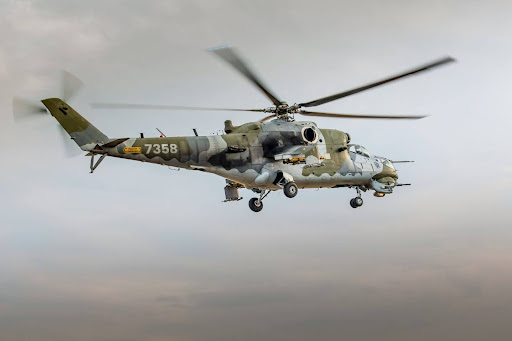Flying has always been about breaking limits, from the first engine-propelled flight to crossing continents in hours. Just look at suppliers like Pilot John International who are constantly updating their inventory.
What if we could go even further, faster? Enter supersonic and hypersonic aircraft technologies – the next frontier in the quest for speed and efficiency.
Unleashing the Need for Speed
From Wright to Wow
The evolution of air travel has been nothing short of remarkable. From the Wright brothers’ historic flight to today’s sprawling airports, humanity’s thirst for speed has only grown stronger. But why stop at mere convenience when we can strive for something greater?
Zooming Ahead
Supersonic flight – the stuff of legends. Think Concorde, the sleek marvel that sliced through the sky at twice the speed of sound. But that was just the beginning. With companies like Boom Supersonic and Aerion Supersonic reviving the dream, the future of supersonic travel is brighter than ever.
Hypersonic Horizons
Hold onto your hats – we’re about to go even faster. Hypersonic flight, clocking in at speeds over Mach 5, isn’t just sci-fi anymore. It’s the next big leap in aviation, promising transcontinental trips in the blink of an eye. Imagine zooming from New York to London in time for tea!
Soaring Through the Sound Barrier
Boom! The Sonic Symphony
Breaking the sound barrier isn’t just about speed – it’s about making a statement. The iconic sonic boom, a thunderous reminder of human ingenuity, echoes through the clouds as we push the limits of what’s possible. It’s not just a sound; it’s a symphony of progress.
Concorde: The Legend Lives On
Ah, the Concorde – a true icon of supersonic travel. With its sleek design and unmatched speed, it captured the imagination of a generation. But like all great adventures, its journey had to come to an end. Yet, its legacy lives on in the hearts of aviators and dreamers alike.
Beyond the Horizon
Supersonic is so yesterday; let’s talk hypersonic. With speeds that defy comprehension, hypersonic flight isn’t just about getting from A to B – it’s about rewriting the rules of travel. From military applications to commercial ventures, the possibilities are as vast as the sky itself.
Crafting the Future of Flight
From Dreams to Reality
The future of aviation isn’t just a pipe dream – it’s taking shape before our eyes. With advancements in materials science, propulsion systems, and aerodynamics, the sky’s the limit. Literally. It’s not just about going faster; it’s about doing it sustainably and responsibly.
Green Skies Ahead
But wait – what about the environment? Faster isn’t always better if it comes at the cost of our planet. As we reach for the stars, we must also tread lightly on the Earth below. That means developing greener technologies and minimizing our carbon footprint. After all, we’re all passengers on this spaceship called Earth.
Buckle Up for the Future
A New Dawn
As we gaze towards the horizon, one thing is clear: the future of flight is brighter than ever. With supersonic and hypersonic technologies leading the charge, the sky’s no longer the limit – it’s just the beginning. So buckle up, fellow adventurers. The journey ahead promises thrills, chills, and a whole lot of speed.
Ready for Takeoff
From the sonic booms of yesteryear to the hypersonic dreams of tomorrow, each leap forward brings us closer to a world where the impossible becomes possible. So let’s strap in, fire up those engines, and soar towards a future where the sky’s no longer the limit – it’s just the beginning.
Frequently Asked Questions
Q: What exactly is supersonic flight?
A: Supersonic flight refers to speeds exceeding the speed of sound, which is approximately 767 miles per hour (1,235 kilometers per hour) at sea level. When an aircraft travels faster than the speed of sound, it generates a sonic boom, creating disturbances in the air that can be heard on the ground.
Q: Why is supersonic travel considered groundbreaking?
A: Supersonic travel offers significantly reduced travel times, making it possible to traverse long distances in a fraction of the time compared to subsonic aircraft. This opens up new possibilities for business travel, emergency response, and global connectivity.
Q: What happened to the Concorde?
A: The Concorde, once the flagship of supersonic travel, was retired from service in 2003 due to economic challenges and environmental concerns. While it remains a symbol of technological achievement, its operational costs and limited routes ultimately led to its discontinuation.
Q: How does hypersonic flight differ from supersonic flight?
A: Hypersonic flight involves speeds exceeding Mach 5, or five times the speed of sound. While supersonic flight is impressive in its own right, hypersonic flight offers even greater speed and efficiency, with the potential to revolutionize long-distance travel and military operations.
Q: When can we expect to see commercial supersonic and hypersonic flights?
A: While there is ongoing research and development in the field of supersonic and hypersonic aviation, commercial viability remains a challenge. However, companies like Boom Supersonic and Aerion Supersonic are actively working towards bringing supersonic travel back to the skies in the near future.






